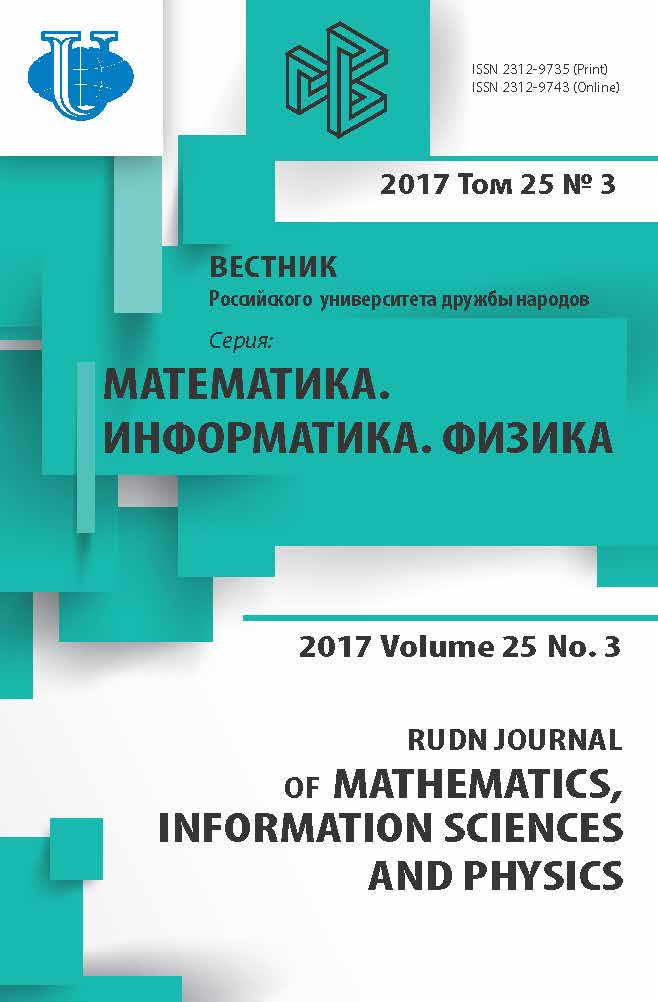High-Accuracy Finite Element Method for Solving Boundary-Value Problems for Elliptic Partial Differential Equations
- Authors: Gusev AA1
-
Affiliations:
- Joint Institute for Nuclear Research
- Issue: Vol 25, No 3 (2017)
- Pages: 217-233
- Section: Mathematical Modeling
- URL: https://journals.rudn.ru/miph/article/view/16205
- DOI: https://doi.org/10.22363/2312-9735-2017-25-3-217-233
Cite item
Full Text
Abstract
A new computational scheme of the finite element method of a high order of accuracy for solving boundary value problems for an elliptic partial differential equation that preserves the continuity of the derivatives of the approximate solution in a bounded domain of a multidimensional Euclidean space is proposed. A piecewise continuous basis of the finite element method is generated using interpolation Hermite polynomials of several variables and ensures the continuity of not only the approximate solution but also its derivatives up to a given order on the boundaries of finite elements, depending on the smoothness of the variable coefficients of the equation and the boundary of the domain. The efficiency and accuracy order of the computational scheme, algorithm and program are demonstrated by the example of an exactly solvable boundary-value problem for a triangular membrane depending on the number of finite elements of the partition of the domain and the dimension of the eigenvector of the algebraic problem. It was shown that, in order to achieve a given accuracy of the approximate solution, for schemes of the finite element method with Hermite interpolation polynomials the dimension of the eigenvector is approximately two times smaller than for schemes with Lagrange interpolation polynomials that preserve on the boundaries of finite elements only the continuity of the approximate solution. The high-accuracy computational scheme of the finite element method is oriented to calculations of the spectral and optical characteristics of quantum-mechanical systems.
About the authors
A A Gusev
Joint Institute for Nuclear Research
Author for correspondence.
Email: gooseff@jinr.ru
6 Joliot-Curie St., Dubna, Moscow region, 141980, Russian Federation
References
- A.A. Gusev, O. Chuluunbaatar, S.I. Vinitsky, et al., Symbolic-Numerical Solution of Boundary-Value Problems with Self-Adjoint Second-Order Differential Equation using the Finite Element Method with Interpolation Hermite Polynomials, Lecture Notes in Computer Science 8660 (2014) 138–154.
- A.A. Gusev, L.L. Hai, O. Chuluunbaatar, S.I. Vinitsky, Program KANTBP 4M for Solving Boundary-Value Problems for Systems of Ordinary Differential Equations of the Second Order. URL http://wwwinfo.jinr.ru/programs/jinrlib.
- P. Ciarlet, The Finite Element Method for Elliptic Problems, North-holland Publ. Comp, Amsterdam, 1978.
- L. Ramdas Ram-Mohan, Finite Element and Boundary Element Applications in Quantum Mechanics, Oxford Univ. Press, New York, 2002.
- A.A. Gusev, O. Chuluunbaatar, S.I. Vinitsky, V.L. Derbov, A.G´o´zd´z, Algorithms for Solving the Parametric Self-Adjoint 2D Elliptic Boundary-Value Problem Using High-Accuracy Finite Element Method, RUDN Journal of Mathematics, Information Sciences and Physics 25 (1) (2017) 36–55.
- O.A. Ladyzhenskaya, The Boundary Value Problems of Mathematical Physics, Vol. 49, Springer, Berlin, 1985.
- V.V. Shaidurov, Multigrid Methods for Finite Elements, Springer, Berlin, 1995.
- K.J. Bathe, Finite Element Procedures in Engineering Analysis, Englewood Cliffs, Prentice Hall, New York, 1982.
- N.S. Bakhvalov, N.P. Zhidkov, G.M. Kobelkov, Numerical Methods, Nauka, Moscow, 1987, in Russian.
- E.B. Becker, G.F. Carey, J. Tinsley Oden, Finite elements. An introduction. Vol. I, Englewood Cliffs, Prentice Hall, New Jersey, 1981.
- G. Strang, G.J. Fix, An Analysis of the Finite Element Method, Prentice-Hall, Englewood Cliffs, New York, 1973.
















